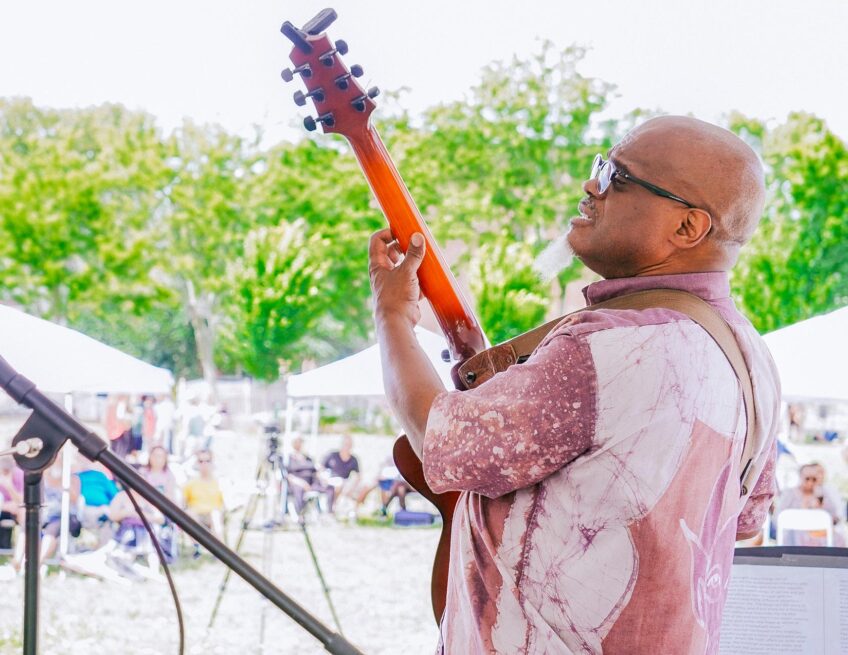
On Saturday, December 21, an enormous crystalline inflatable dome rose almost to the ceiling of a performance space in the South End’s Calderwood Pavilion. Inside the inflatable dome, three nude dancers reclaimed their bodies and their artistic agency in “See | Be Seen,” a new piece by artist Emily Beattie.
The seeds of the show were planted three years ago when Beattie began considering her experience as a female dancer. Trained in ballet, modern and improvisational dance, she found that very specific rules came tied to each form. Her thought process aligned with the beginning of the Me Too movement, which further spurred her work.
“There are patriarchal expectations put on dance. That you need to look a certain way, that you need to move in a certain way, that the audience needs to necessarily feel welcomed,” she says. “There are power dynamics in that.”
In “See | Be Seen,” those power dynamics are flipped completely in the dancers’ favor. The dome in which the women perform can be looked into but not with complete clarity. Audience members are encouraged to walk around the dome in the round while the performers are dancing. If they want to be involved and to witness the piece, they have to work for it.
The dancers are also always working in tandem. Fighting for women’s rights to their own bodies and movements is a group task, every woman supporting every other. Similarly the show was produced and performed entirely by women. Beattie dances with her light designer and performance collaborator Cari Ann Shim Sham and dancer Jennifer Roberts. Architect Mary Hale designed the dome and the piece was stage-managed by Lyanne Low.
“I think it takes a team to say go beyond, go beyond where you think you should go,” says Beattie. “We’re proud that we have an all female show.”
To the sound effects of twittering birds, ocean waves and harsh winds, the dancers move in nontraditional contemporary actions that fly in the face of prim and beautiful ballet pliés. Halfway through the piece the lights are shut off and the dancers use spotlights in the dome to project their own forms onto the plastic exterior facing the audience. At this stage the women become artworks come to life.
In one moment their silhouettes look like Matisse’s nudes animated with a vengeance, in another, peeking through the dome to the three figures crouched around the light, they are Goya’s witches ripping out of the tight confines of his etchings. But in each instance they are infused with their own agency, performing movements and dances that they could only have chosen for themselves.
Beattie says she plans to continue evolve the piece here on local stages and to take it on tour across the U.S. later on. She hopes to debut the dance in a larger space that will spotlight the dome even further. “I hope audiences see many more facets of the female body in performance,” says Beattie. “There’s hope that dancers and performers can have their agency and feel fulfilled in their performance.”








